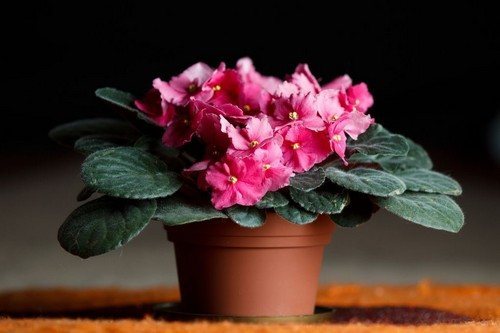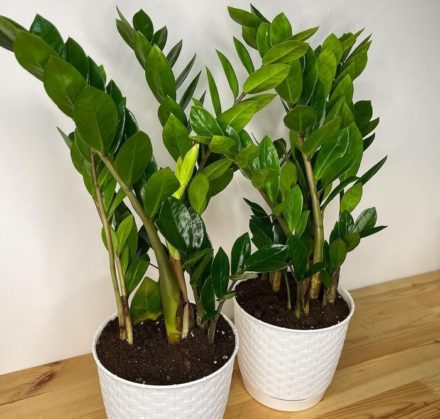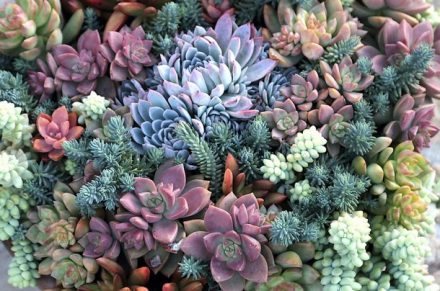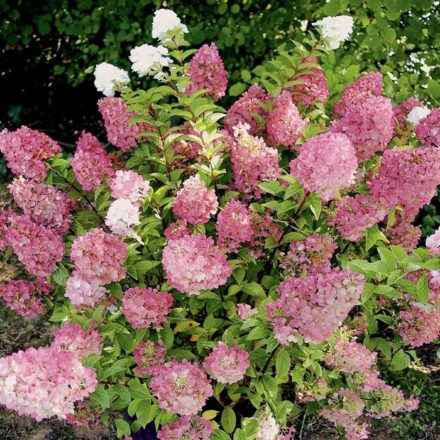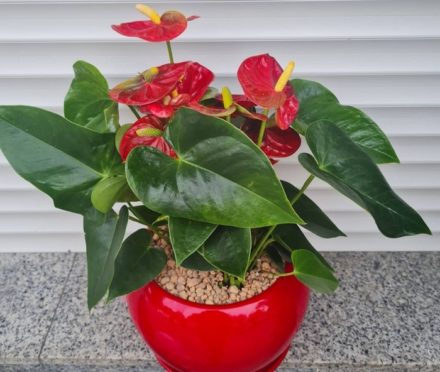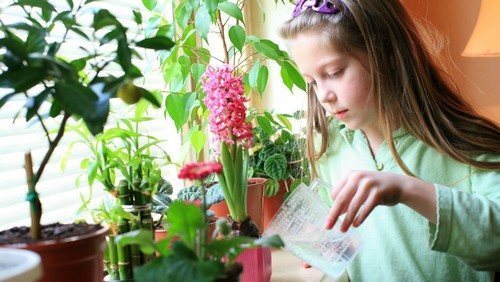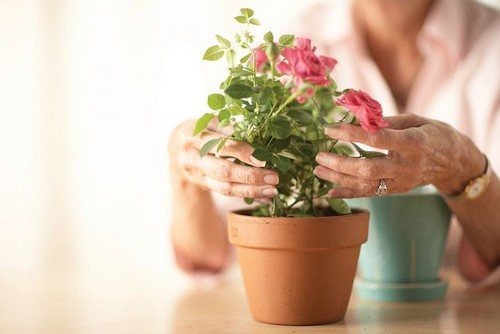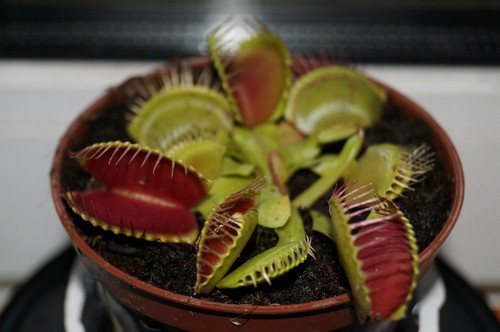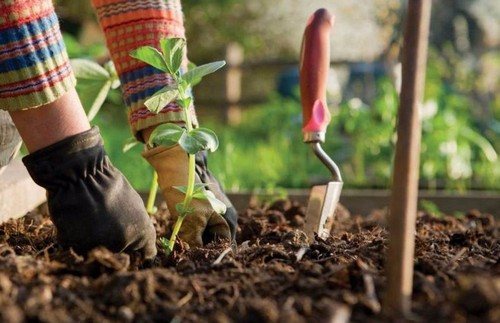Saintpaulia or Uzambara violet is a bright representative of indoor floriculture. Numerous breeding varieties with unique inflorescences are known, but the active flowering period of many specimens is not long. Rejuvenating the bush will help prolong the charm of the colors.
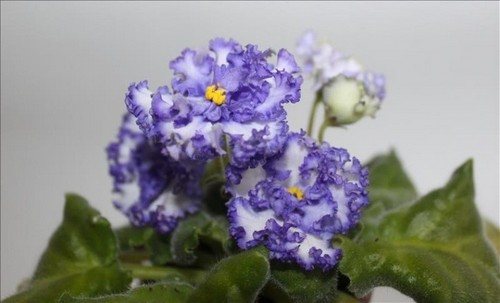
When the violet is restored
Typically, the most magnificent flowering with large, juicy flowers occurs in the third year of Saintpaulia's life. With time:
- inflorescences become smaller;
- the number of flowers decreases;
- the rosette is overgrown with foliage.
The lower leaves lose their decorative properties and have to be broken off - this is how the stem appears. The plant becomes unattractive and vulnerable to disease. At this moment it is worth thinking about rejuvenation.
Important! It is recommended to break off the leaves of Saintpaulia rather than trim it.
Renewal methods
Information sources offer many options for stimulating plants to grow and increase inflorescences. True, many of them are not suitable for preserving varietal characteristics, for example, chimeras and fantasy, since they often sport (genetically mutate), but there are also universal methods.
By deepening the stem
This method is used when the height of the formed stem is no more than 3 cm, when it has not yet become covered with a brown crust, and is combined with transplantation.
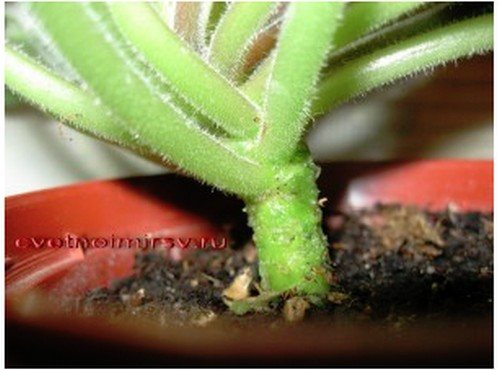
To do this you need:
- Choose a deeper pot and add drainage and some fresh substrate to the bottom.
- Remove the plant from the pot, be sure to free it from the old soil. Fluff the roots.Trim long ones.
- Deepen the flower into the ground to the lower leaf cuttings, sprinkling new soil around it.
- Moisturize.
Care for it like you would a transplanted violet. Soon new roots will emerge from the stem, and the rosette will actively begin to grow. This method is considered the most gentle.
Rooting a rosette
The use of this method provides special advantages:
- renewing an old plant from a socket;
- obtaining young children from the remaining part of the bush while maintaining maternal characteristics;
- relatively fast flowering.
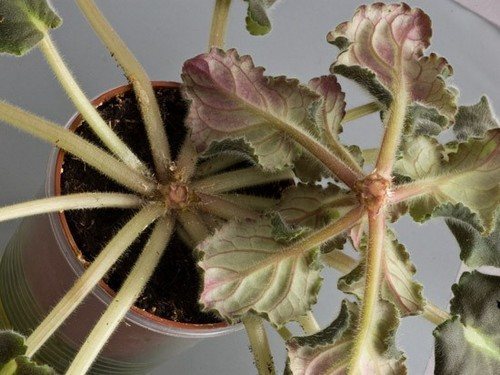
This technique is also good for saving violets with a damaged root system, for example, which has been flooded with water.
In Saintpaulia, the crown above the lower tier of leaves is cut off. 1.5 - 2 cm of stem remains. There is no point in enlarging the stem, because the most powerful roots grow immediately under the lower cuttings. Disinfect the cut with charcoal and leave to dry for 20–30 minutes. This is a mandatory condition, since the released violet juice mixes with the soil and clogs the pores of the plant, exposing the stem to rot.
In the meantime, prepare the flowerpot. Its diameter should be 3 times smaller than the actual diameter of the socket. Fill the bottom with drainage and soil.
Place the dried violet in a pot and fill it with substrate up to the lower leaf cuttings. Moderately moisten the planting.
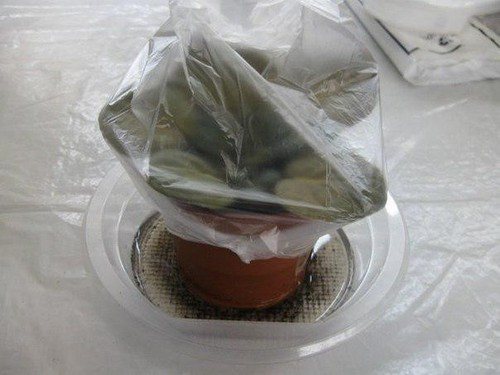
We create greenhouse conditions for Saintpaulia with a temperature of +22O…+ 25O, covering it with a bag. Do not forget about mandatory lighting for at least 12 hours, daily ventilation of the greenhouse and moderate moisture of the substrate.
After 1.5 - 2 weeks, strong roots form on the stem, and after 2 - 3 months the violet may already produce buds.
Water the remaining stump in the pot. Soon stepsons will appear on it, which will root in the same way as the top.
Rejuvenation with the head
For adult Saintpaulia, with an already coarsened stem, rooting in water is used.
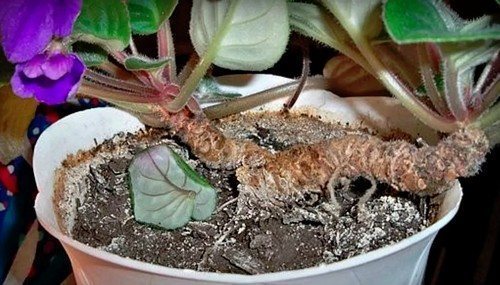
Over many years, the stem stretches out, becomes covered with a strong crust and is unable to form roots. At the top there remains a small weak rosette of leaves; violet growers call this crown the “head”.
It is necessary to cut off the tip 2 - 3 cm lower along the stem with a sharp knife. Peel off the brown crust until living green tissue appears.
Pay attention to the cleanliness of the trunk - it should be a uniform green color. If brown spots remain, the plant may rot.
Be sure to sprinkle the “leg” with crushed coal and let it dry for 20 minutes.
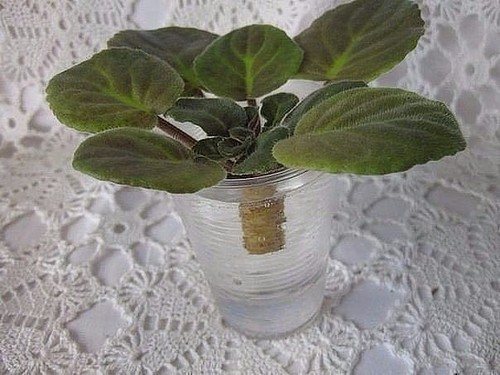
Place the finished “head” in a container of water. After a couple of weeks, you can observe the appearance of roots.
As soon as the roots reach 2 cm, you can replant the plant from the ground.
These universal methods for restoring adult violets can not only restore the lost decorativeness of the bush, but also preserve the varietal characteristics of Saintpaulia.

